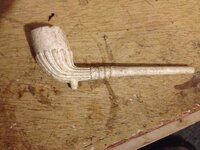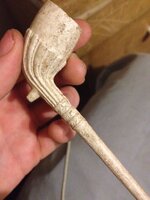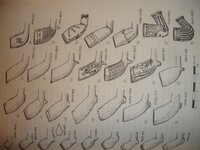Leenumba23
Newbie
- Dec 14, 2014
- 3
- 2
- Primary Interest:
- All Treasure Hunting


I found this pipe on the river bank in early spring on the sheepscott river in whitefield maine. It has "Scotland" on one side and "386" and possibly something else that might have been eroded off. My guess is the ice dug it up and pushed it to the shallows where I found it. The river was used for transportation and there was a narrow guage railway running along the river. The rail was torn up in 1933 and the trail that remains has hundreds of the iron spikes. At a cement foundation near where I found the pipe and a bridge where the river crosses I have found old iron spike nails and a Pepsi can from the seventies. This summer I'll dig more for sure but what kind of value would some of these things have? I know I'm not sitting on a gold mine right by my house but these things are really adding up lol.
Last edited:






